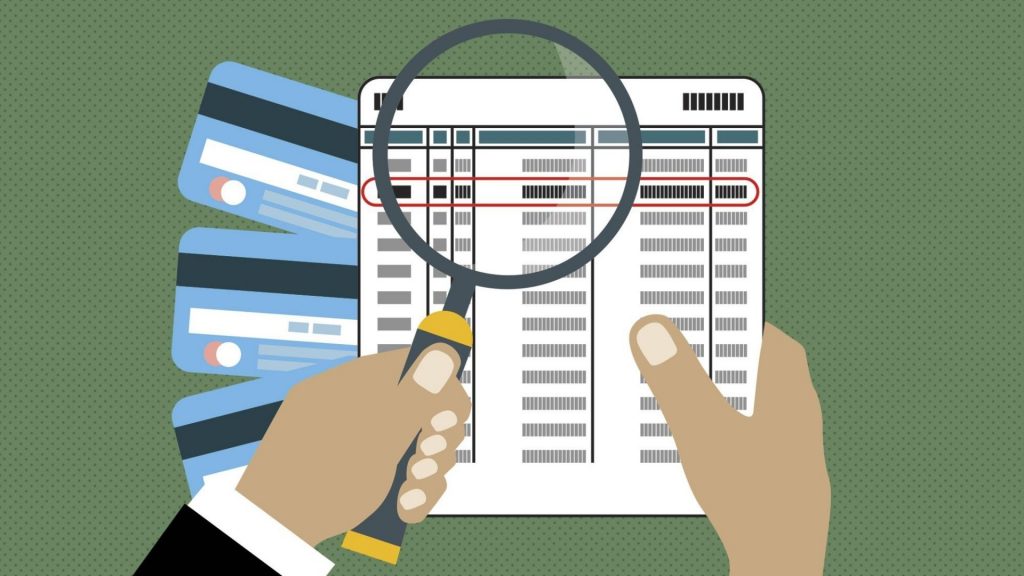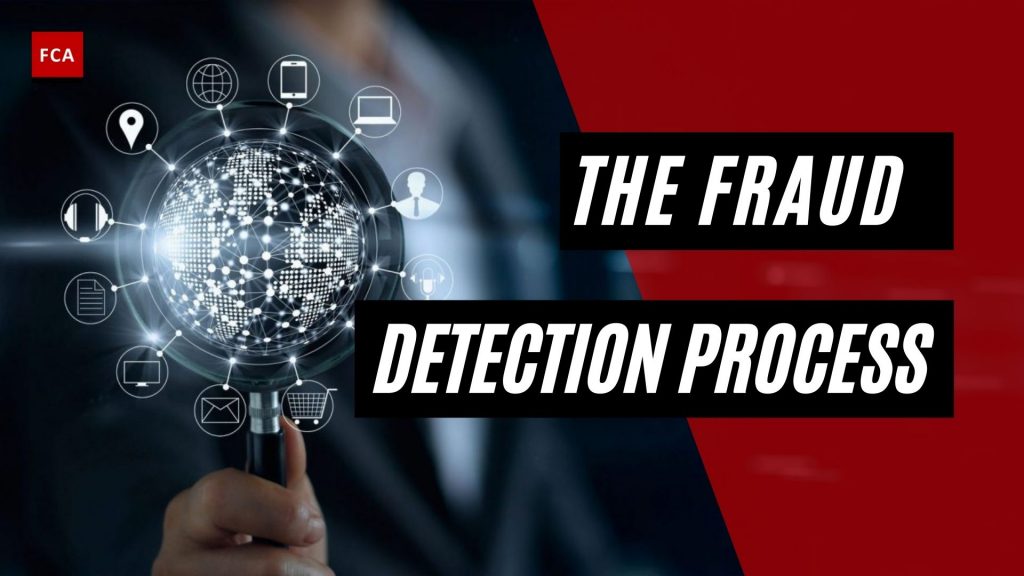The fraud detection process is a review process that involves the review of historical financial transactions and other related information to identify the fraud indicators in a particular department or function of the company.
It involves the analysis of various conditions that highlight the fraud enablers, breaches of internal controls, and any possible management bias for the actual fraud incident.

Fraud Detection Process
The fraud detection process is also a forward-looking activity to assess the possibilities of reoccurrence of fraud incidents. To assess the reoccurrence of fraud in the future, fraud investigators analyze the historical as well as current fraud incidents to establish the inter-connections between them. This connection assessment helps in the prediction of possible future fraud incidents.
To detect the fraud all the processes and activities are studies to find the controls weaknesses and possible avenues, which are exploited by the persons or fraudsters.
Fraud detection is an ongoing process that is performed on the occurrence of fraud incidents or to assess the possibilities of occurrence of fraud in any area of the department.
Fraud Detection Techniques
Because fraud typically involves multiple repeated methods, looking for patterns is a general focus for fraud detection. Data analysts, for example, can prevent insurance fraud by developing algorithms to detect patterns and anomalies.
Fraud detection can be distinguished through the application of statistical data analysis techniques or artificial intelligence (AI)
Techniques For Analyzing Statistical Data
- determining statistical parameters
- analysis of regression
- models and probability distributions
- matching of data
Artificial Intelligence (AI) Techniques Used To Detect Fraud
- Data mining is the process of categorizing, grouping, and segmenting data in order to search through millions of transactions for patterns and detect fraud.
- Neural networks learn suspicious-looking patterns and use them to further detect them.
- Machine learning detects fraud characteristics automatically.
- Pattern recognition detects suspicious behavior in the form of classes, clusters, and patterns.
Types Of Fraud
Fraud can be committed in a variety of ways and settings. Fraud can be committed in the banking, insurance, government, and healthcare sectors, for example.
Customer account takeover is a common type of banking fraud. This occurs when someone illegally gains access to a victim’s bank account through the use of bots. Other types of banking fraud include the use of malicious applications, the creation of false identities, money laundering, credit card fraud, and mobile fraud.
Insurance fraud includes premium diversion fraud, which is the theft of insurance premiums, as well as free churning, which is excessive trading by a stockbroker in order to maximize commissions. Asset diversion, workers’ compensation fraud, car accident fraud, stolen or damaged car fraud, and house fire fraud are all examples of insurance fraud. All insurance fraud is motivated by a desire for financial gain.
Government fraud involves defrauding federal agencies such as the U.S. Departments of Health and Human Services, Transportation, Education, and Energy are some examples. Billing for unnecessary procedures, overcharging for items that cost less, providing old equipment when billing for new equipment, and reporting hours worked for a worker who does not exist are all examples of government fraud.
Drug and medical fraud, as well as insurance fraud, are all examples of healthcare fraud. When someone defrauds an insurer or a government health care program, they are committing healthcare fraud.
How Fraud Detection Works
Many criminals commit fraud by exploiting loopholes and testing patterns. In order to crack the passcode on a credit card, a hacker might create a computer program that randomly tests thousands of 4-digit pins per second. Because fraud is frequently committed through patterns, fraud detection employs artificial intelligence to search for these patterns and sends an alert when one is detected.
Depending on the severity of the alert, it may immediately block all activity or send the alert to a human evaluator for further investigation. To approve suspicious banking transactions, for example, your bank may send you text message alerts.
Final Thoughts
Fraud detection is a set of activities carried out to prevent money or property from being obtained through deception.
Many industries, such as banking and insurance, use fraud detection software. Forging checks or using stolen credit cards are examples of banking fraud. Other types of fraud may include exaggerating losses or causing an accident solely for the purpose of receiving a payout.
With an infinite and ever-increasing number of ways to commit fraud, detection can be difficult. Reorganization, downsizing, switching to new information systems, or experiencing a cybersecurity breach can all impair an organization’s ability to detect fraud. Techniques such as real-time fraud monitoring are recommended. Financial transactions, locations, devices used, initiated sessions, and authentication systems should all be scrutinized for fraud by organizations.








